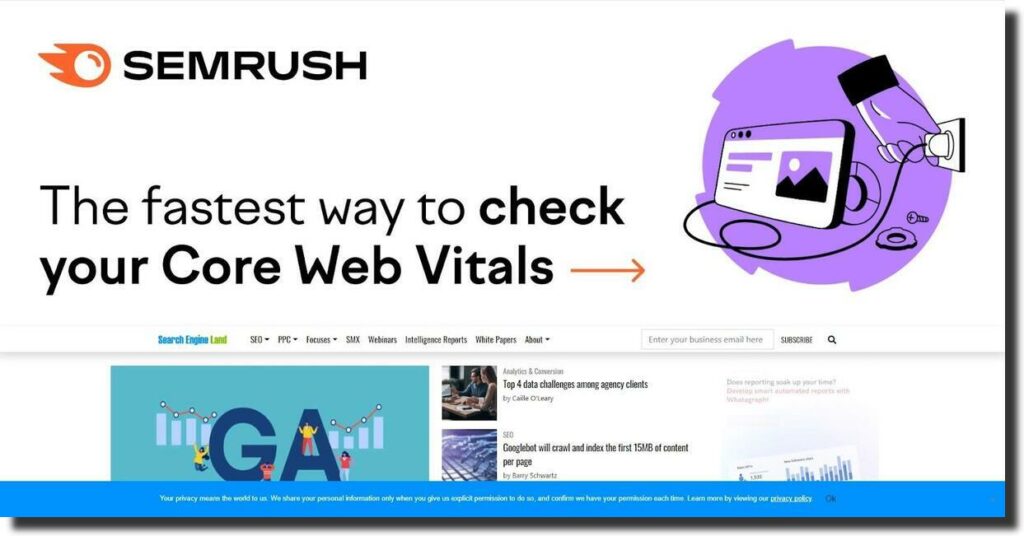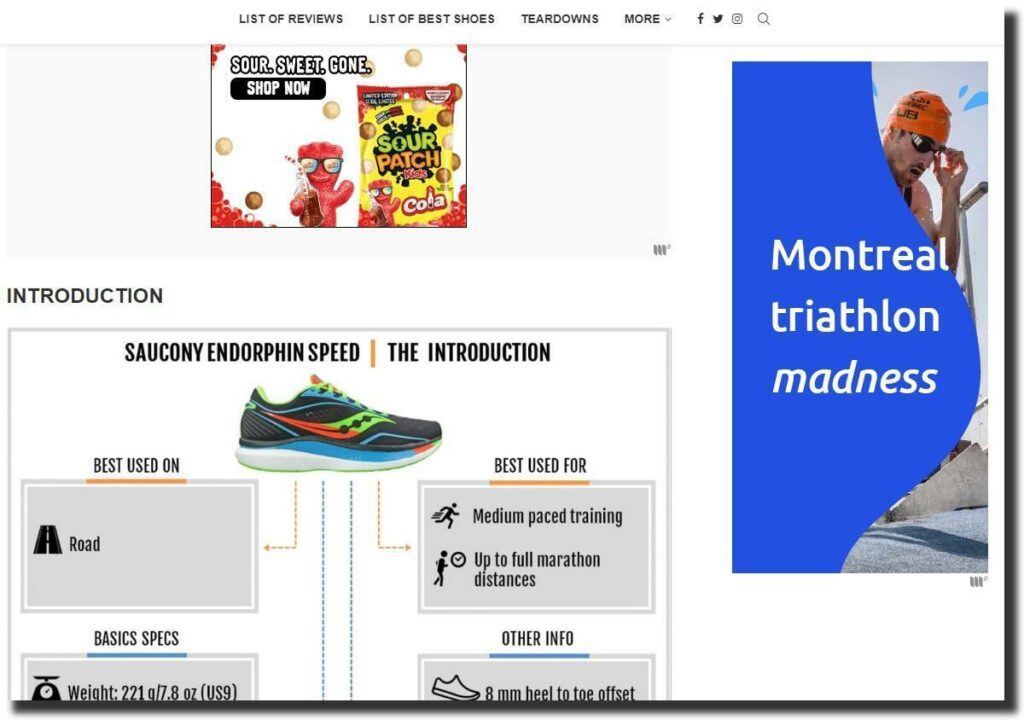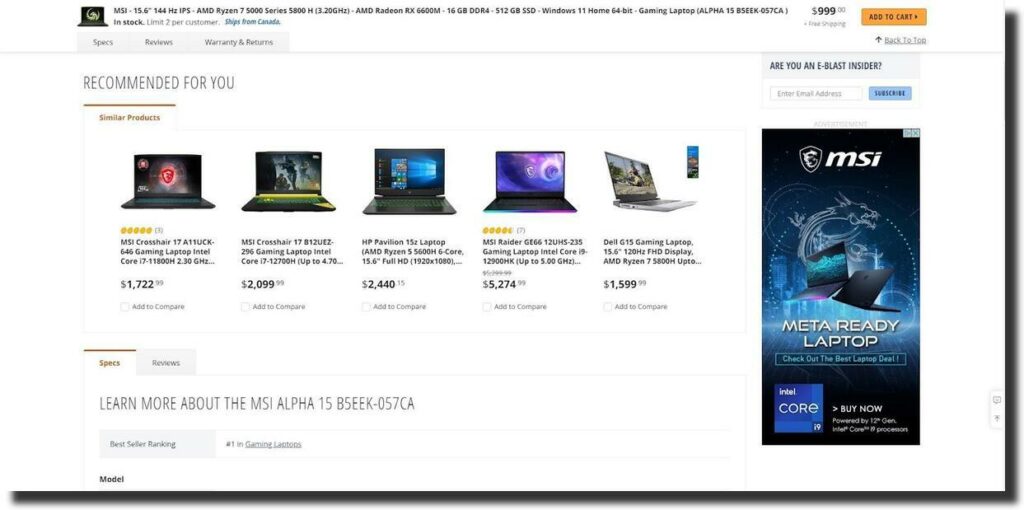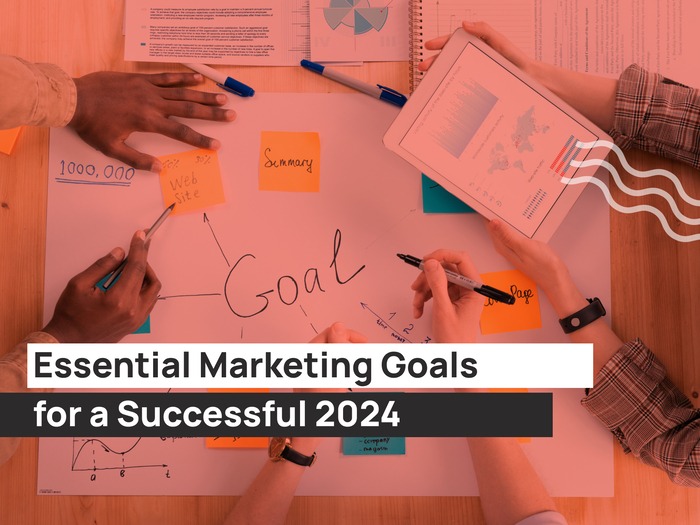As the advertising world continues to change, the landscape becomes increasingly complex. Contextual Targeting is the future of marketing because it helps you to reach your target audience in a personalized but efficient way.
Advertising is a billion-dollar industry and will only continue to grow as new forms of media, like streaming TV, continue to increase in popularity. To keep up with the ever-increasing demand for ads, marketers have been exploring new ways to advertise their products more effectively than ever before.
Contextual Targeting is the future of advertising– it’s cheap, faster, and more efficient than anything else out there. This means that, rather than simply showing an advertisement to everyone, they are specifically targeted to the person viewing them.
Why?
Knowing who is looking at your ads and what they want is challenging in today’s world. Using contextual targeting, people will see the right ads when they need them most!
Discover how this powerful new tool will give you an edge over the competition in this article.
What is Contextual Targeting?
Contextual targeting is a type of advertising that allows advertisers to target ads based on the context of the user’s current activity. You can use contextual targeting to target ads on websites, apps, and other digital platforms.
There are a few different ways to target contextually:
1. Directly select what creative your ads appear next to
This can be done through many ad platforms, including Google AdWords, DoubleClick Bid Manager, and AppNexus.
You select the piece of content you want your ad to appear next to and then place a bid for that placement. The ad platform will then match your ad with the appropriate content.
2. Targeting (with your Demand Side Platform, DSP, programmatically:
A DSP allows you to buy inventory from multiple publishers in real-time through an auction-based system. You can set up contextual targeting rules within your DSP so that your ads only appear on pages with certain types of content.
For example, if you’re selling travel insurance, you might want your ads to only appear on pages that mention travel insurance or about upcoming trips/vacations.
3. Using first-party data:
First-party data is collected by a company related to its customers/users. This data can be used for targeted advertising if collected lawfully and with the customer’s consent. Many companies have opted into collecting first-party data to serve more relevant ads to their users across the web.
Contextual Targeting vs Behavioral Targeting
A Contextual targeting is the process of targeting ads to web users based on the context of the web page they are viewing. Contextual targeting uses information about the content of a web page to select which ads should be displayed on that page.
Behavioral targeting is the process of targeting ads to web users based on their previous online behavior. Behavioral targeting collects information about users’ online activity, such as the websites they have visited or their searches, to select which ads should be displayed to that user.
How Does Contextual Targeting Work?
Contextual targeting relies on technology that analyzes the content of a web page and then selects which ads would be most relevant to the page’s content.
You can use contextual targeting in many different ways, including:
| Ways Contextual Targeting works | |
| Targeting Keyword | Ads can be targeted to appear on web pages that contain certain keywords. For example, if you sell running shoes, you could target your ad to appear on web pages about running, sports, or fitness. |
| Targeting by Topic | Ads can also be targeted to appear on web pages about specific topics. For example, if you sell travel insurance, you could target your ad to appear on web pages about travel, vacation planning, or aviation. |
| Targeting by Demographic | Contextual targeting can also be used to target ads based on the demographics of the people who are likely to see them. For example, if you sell products for seniors, you could target your ad to appear on popular web pages with people over 55. |
| Targeting by Location | Contextual targeting can also be used to target ads based on the geographic location of the people who are likely to see them. |
Benefits Of Contextual Targeting:
Contextual targeting is a form of targeted advertising that considers the context of a user’s online activity when serving them ads. This means that ads are more likely to be relevant to the user and, therefore, more effective.
There are several benefits to using contextual targeting:
1. Increased Relevance
As mentioned above, contextual targeting leads to ads that are more relevant to the user. This means they are likelier to pay attention to the ad and take action.
2. Higher Click-through Rates
When users see an ad that is relevant to their current situation, they are more likely to click on it. This results in higher click-through rates and overall performance for the advertiser.
3. Greater Engagement
Contextual targeting leads to increased ad campaign engagement. Users who see relevant ads are more likely to interact with them, providing valuable feedback for the advertiser.
4. Reduced Costs
Since contextual targeting leads to higher performance, it can also help reduce advertising costs. By serving more relevant ads, you can get better results while spending less money.
5. Anti-ad Fatigue
Ad fatigue is a very real phenomenon, and it can significantly impact your business. As the name suggests, ad fatigue occurs when people see too many ads and start to ignore them.
This can happen for several reasons, including
- They’ve seen the same ad too many times
- The ad is not relevant to their interests
- The ad is annoying or intrusive.
If you’re running online ads, it’s important to be aware of ad fatigue and take steps to avoid it. One way to do this is through contextual targeting, a form of targeted advertising that considers the context of a user’s web browsing activity.
By targeting ads based on context, you can ensure that your ads are more relevant to users and less likely to cause fatigue.
6. Greater Accuracy
When done correctly, contextual targeting can be very accurate, delivering ads to users interested in the advertised product or service.
7. Privacy Friendly
Contextual targeting does not require collecting personally identifiable information (PII), making it a privacy-friendly way to target ads.
It does not collect or store any personally identifiable information. It simply looks at the context of a user’s online activity and serves them ads based on that.
So, if you are looking at an article about hiking boots, you might see an ad for a hiking company. Contextual targeting is great for serving relevant ads without violating anyone’s privacy.
Reasons Why Contextual Targeting Matters More Than Ever:
Following are the reasons why contextual targeting has made a comeback in 2022:
Third-party Cookie Replacement
The online advertising ecosystem is in the midst of a major shift. For years, third-party cookies have been the primary means of tracking consumers across the web and delivering targeted ads. But now, with new privacy regulations coming into effect and browsers beginning to block third-party cookies, advertisers are scrambling to find a replacement.
Contextual targeting is one solution that is gaining popularity. Rather than relying on cookies to track users, contextual targeting uses the content on a page to determine which ads to show. This means that ads are more likely to be relevant to the user, which can lead to higher engagement and conversion rates.
With privacy becoming an increasingly important concern for consumers, contextual targeting will continue to grow in popularity to deliver targeted ads without invading users’ privacy.
Understand Brand Safety Better
Contextual targeting also allows you to avoid potential pitfalls damaging your brand. For example, if you are targeting an ad to people who have visited your website in the past, you know that they are already interested in what you have to offer.
However, if you target an ad to someone who has never heard of your company, they may not be as receptive to your message.
Content Analysis With Advanced AI
You can use AI to analyze the context of a user’s search query and identify the intent behind it. This allows for more relevant ads to be served to the user, which can lead to higher conversion rates.
Additionally, AI can track user behavior across multiple devices and platforms, providing even more data that can be used for targeted advertising.
Contextual targeting effectively reaches potential customers already interested in your product or service. By using AI better to understand the context of a user’s search query, you can ensure that your ads are seen by people who are most likely to convert into customers.
How Does Contextual Targeting In Display Advertising Work?
Contextual advertising is a form of targeted advertising that delivers ads based on the content of the webpage that a user is viewing. The ads are generated by scanning the text of the webpage for keywords and then selecting ads that are relevant to those keywords.
This type of targeted advertising can be extremely effective because it ensures that the delivered ads are relevant to the user’s interests. It also allows for a higher degree of control over where and how ads are displayed, which can help to avoid user fatigue and increase click-through rates.
For contextual targeting to work, advertisers must first identify the target audience they wish to reach. They can do this by looking at demographic information such as age, gender, and location. Once they have identified their target audience, they need to research the kinds of keywords and phrases that these users are likely to search for.
Once they have a list of relevant keywords and phrases, they can create ads containing them and bid on them to display their ad on websites where these keywords are present. When a user searches for one of these keywords or visits a website where these keywords are present, their ad will be shown on the page.
Contextual advertising can be an effective way to reach potential customers who are interested in what you have to offer. By targeting your ads specifically to users likely to be interested in your product or service, you can increase your chances of getting clicks and conversions.
What’s a Contextual Ad Tech Partner?
Contextual ad tech partners are technology providers that help publishers deliver contextually relevant ads to their audiences. Contextual advertising is a form of online advertising that uses information about a user’s activity on a website or mobile app to serve them targeted ads.
Contextual ad tech partners work with publishers to help them identify the right contextual signals to target their ads. And then use those signals to deliver the most relevant ads to users.
You can do this through real-time bidding (RTB), which allows advertisers to bid on ad space in real time, or through programmatic buying, which allows publishers to automate buying and selling ad space.
Contextual ad tech partners can help publishers increase revenue by delivering more targeted and relevant ads to their audiences. They can also help improve the user experience by ensuring users see more relevant ads.
Tips For Choosing a Contextual Ad Tech Partner
When you’re looking for a contextual ad tech partner, you must consider all your options. A full-stack contextual solution can offer several advantages over more limited options.
Here are some tips for choosing a full-stack contextual ad tech partner:
1. Look for a partner that offers a complete solution
A full-stack contextual solution should include everything from data collection and analysis to creative development and campaign management. Ensure your potential partner has the experience and capabilities to meet all your needs.
2. Consider the quality of the data collected
A good contextual ad tech partner will have access to high-quality data that you can use to target your ads effectively. This data should be accurate and up-to-date, so you can be confident that your ads will reach the right people.
3. Make sure the partner has experience with your industry
Contextual advertising is most effective when tailored to the specific industry and audience you’re targeting. Choose a partner with experience in your industry. So you can be sure they understand your business and can create an effective campaign for you.
4. Ask about pricing and billing options
Some contextual ad tech partners charge on a per-impression basis, while others charge based on performance (e.g., clicks or conversions). Be sure to ask about pricing and billing before you commit to working with a particular partner.
What Are Some Contextual Targeting Examples?
Contextual ad targeting allows you to target your ads to specific contextually relevant content. You can do this by targeting keywords, topics, or even specific websites. Here are a few examples of how you can use contextual ad targeting to reach your target audience:
- This ad for Semrush, an SEO tool, is being served to the front page of SearchEngineLand.

- Sour Patch Kids and a triathlon event ad displayed on a running shoe review blog.

- MSI targets advertisements for a gaming laptop to their product listing pages on NewEgg, similar to native ad placement.

Let UPQODE Handle All of Your Strategic Marketing Needs!
Not knowing what your target audience is looking for on the web can cause you to spend time and money in vain.
Contextual targeting is an exciting new development in online advertising and will have a major impact on the industry in the coming years.
As more and more businesses begin to adopt this form of targeting, it will become increasingly important for marketers to understand how it works and how to use it effectively.
Contact us today if you need help implementing contextual targeting in your marketing campaigns. We specialize in Contextual Targeting and help businesses reach their target audience with a lower cost per conversion. Reach out for more information about how UPQODE can help maximize your ROI with Contextual Targeting.



